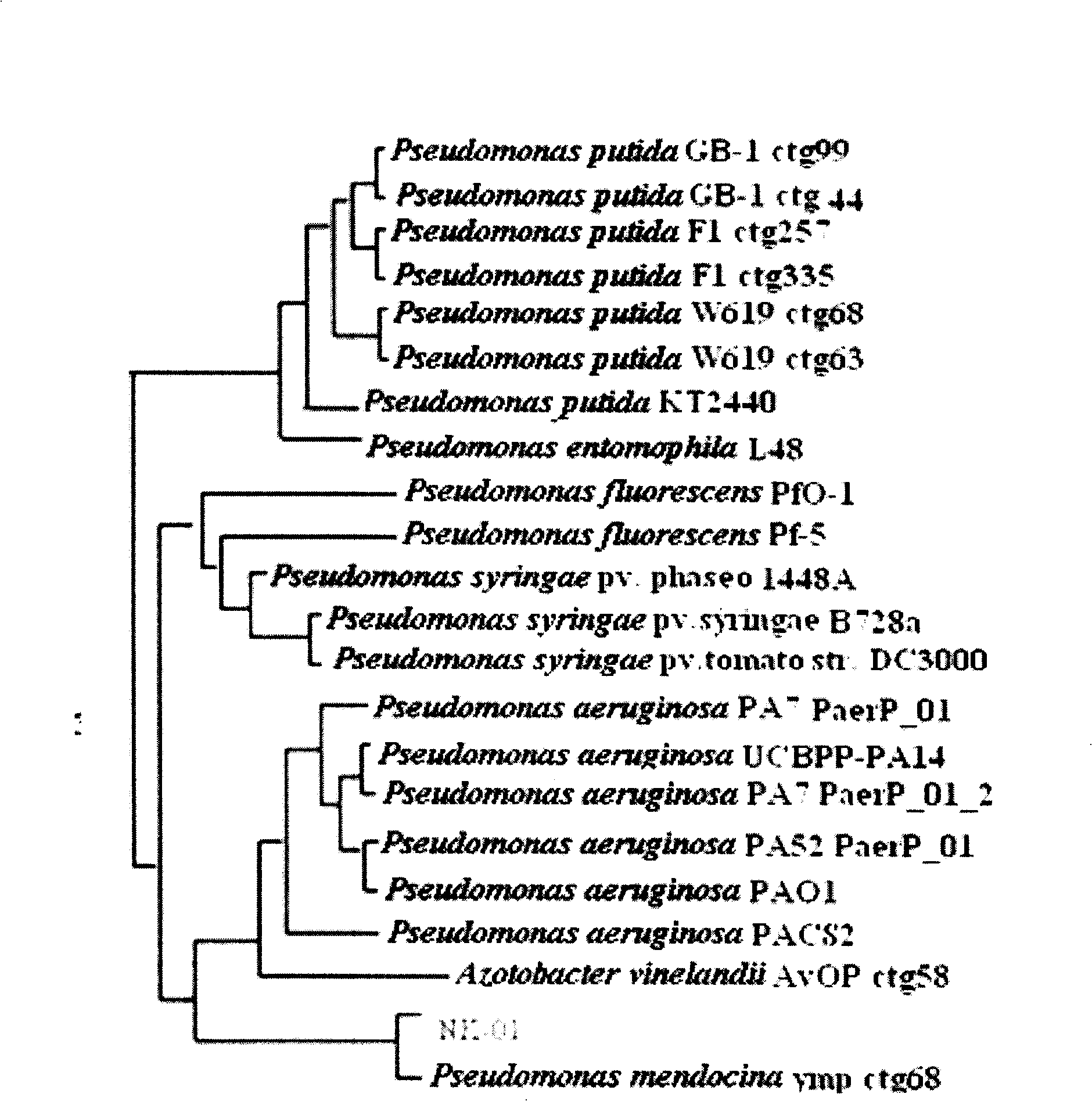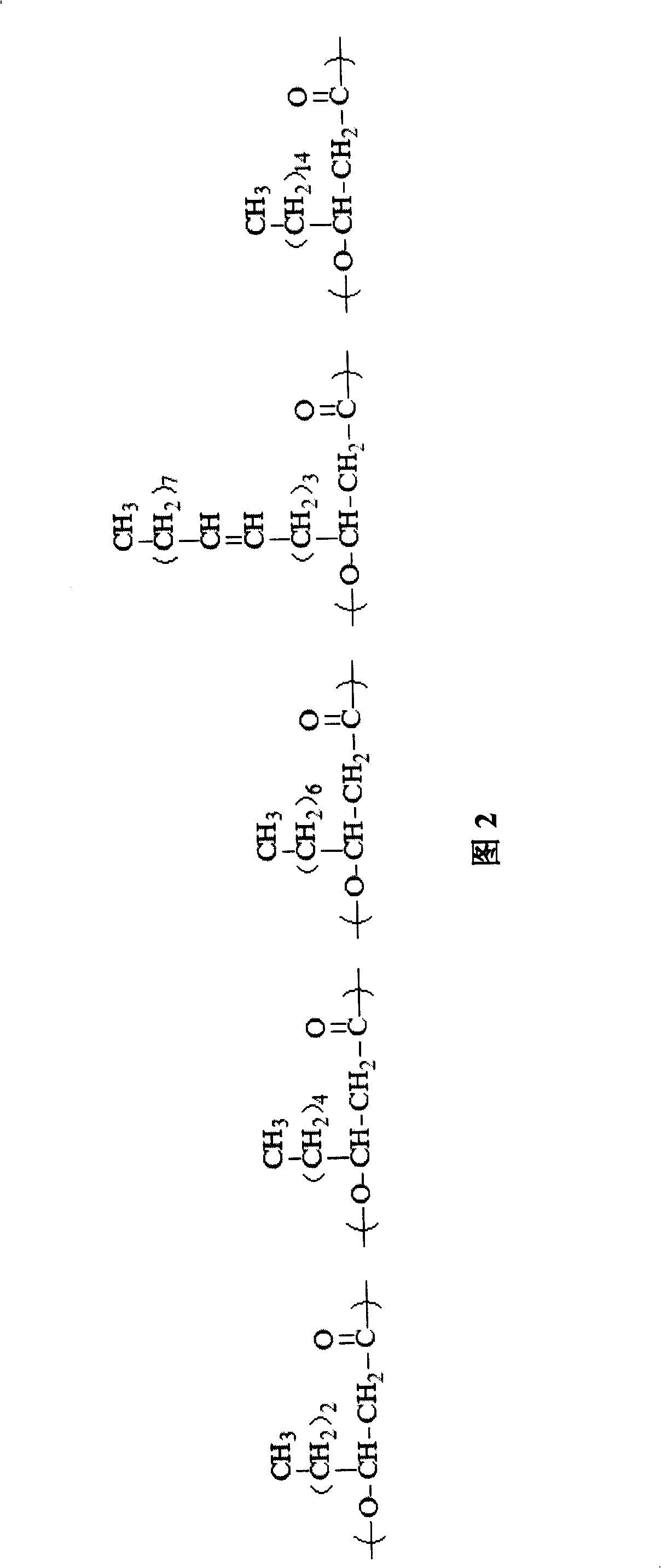1-strain pseudomonas mendocina and uses thereof
A technology of Pseudomonas sapseudomonas, NK-01CCTCCM208005, applied in bacteria, microorganisms, biochemical equipment and methods, etc., can solve the problems of slow growth rate, long fermentation period, low fermentation product yield, etc., and achieve easy processing and molding , the effect of high elasticity
- Summary
- Abstract
- Description
- Claims
- Application Information
AI Technical Summary
Problems solved by technology
Method used
Image
Examples
Embodiment 1
[0026] Embodiment 1, using the Nile Red (Nile Red) fluorescent staining method to isolate the bacterial species Pseudomonas mendoza NK-01CCTCC M 208005 from the farmland soil of Fu Village, Xiqing District, Tianjin City:
[0027] Take 0-10cm of soil and dilute it with sterile saline to 10 1 -10 8 , apply 0.5mL of soil suspension with different dilutions on PHA synthetic bacteria isolation medium 1, and culture at 30°C for 4-5 days. The orange-red fluorescent colonies are PHA-synthesizing bacteria. Then the strains were classified and identified by traditional physiological and biochemical classification experiments, 16S rRNA gene sequence analysis and BIOLOG microbial taxonomic identification system. The bacterial strain was established as Pseudomonas mendoza, named Pseudomonas mendoza NK-01, and was deposited under the number CCTCC M208005.
Embodiment 2
[0028] Example 2, one-step fermentation to prepare medium and long-chain polyhydroxyalkanoate (fermentation under high carbon and low nitrogen conditions)
[0029] The pre-cultivation is in the L-test tube, adding 5ml of medium 2 by aseptic operation, inserting a single colony of NK-01 strain with a sterile toothpick, and incubating at 30°C and 120rpm for 12h. Inoculate 0.5 ml of the pre-culture into a 500 ml Erlenmeyer flask containing 100 ml of medium 2, and culture with shaking at 150 rpm at 30°C for 24 hours. Sterile centrifuge at 6000g for 10min at 4°C, discard the supernatant, oscillate and mix with sterile phosphate buffer in a centrifuge tube, centrifuge again at 4°C, 6000g for 12min, discard the supernatant. The bacteria without medium 2 were aseptically inserted into a 1-liter fermentation device with controllable oxygen stirring, which contained 1 liter of medium 3 (pH 7), and cultured at 30°C for 60 hours with aeration. After the fermentation, the cells were centr...
Embodiment 3
[0030] Example 3, two-step method fermentation to prepare medium and long-chain polyhydroxyalkanoate (fermentation under high carbon and nitrogen-free conditions)
[0031] The pre-cultivation is in the L-test tube, adding 5ml of medium 2 by aseptic operation, inserting a single colony of NK-01 strain with a sterile toothpick, and incubating at 30°C and 120rpm for 12h. Inoculate 0.5 ml of the pre-culture into a 500 ml Erlenmeyer flask containing 100 ml of medium 2, and culture with shaking at 150 rpm at 28°C for 24 hours. Sterile centrifuge at 6000g for 10min at 4°C, discard the supernatant, oscillate and mix with sterile phosphate buffer in a centrifuge tube, centrifuge again at 4°C, 6000g for 12min, discard the supernatant. The bacteria without medium 2 were aseptically inserted into 10 bottles of 500ml Erlenmeyer flasks containing 100ml of medium 4 (pH 7), cultured at 30°C with shaking at 150rpm. Finish fermentation after 60 hours, following steps are with embodiment 2.
PUM
 Login to View More
Login to View More Abstract
Description
Claims
Application Information
 Login to View More
Login to View More - R&D
- Intellectual Property
- Life Sciences
- Materials
- Tech Scout
- Unparalleled Data Quality
- Higher Quality Content
- 60% Fewer Hallucinations
Browse by: Latest US Patents, China's latest patents, Technical Efficacy Thesaurus, Application Domain, Technology Topic, Popular Technical Reports.
© 2025 PatSnap. All rights reserved.Legal|Privacy policy|Modern Slavery Act Transparency Statement|Sitemap|About US| Contact US: help@patsnap.com


